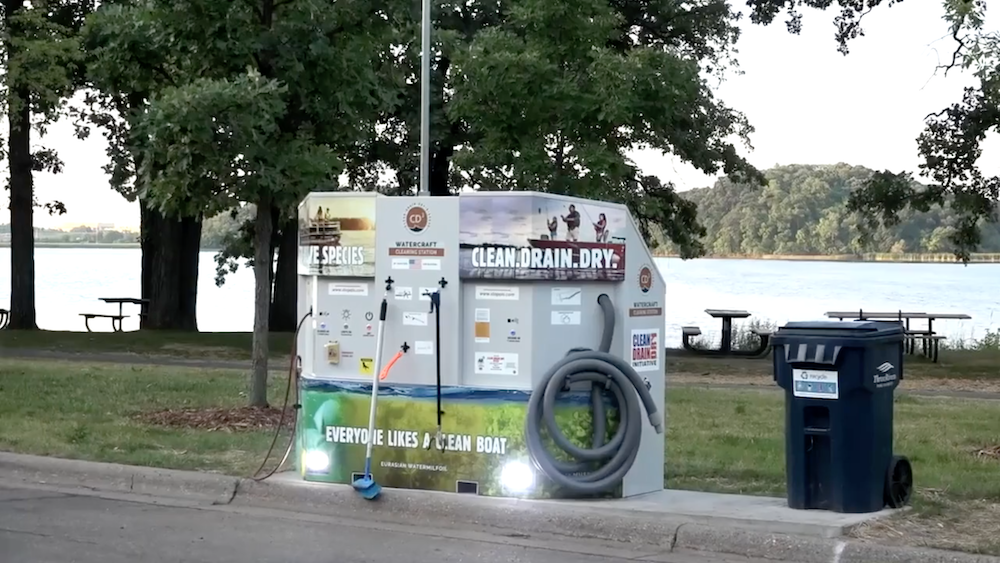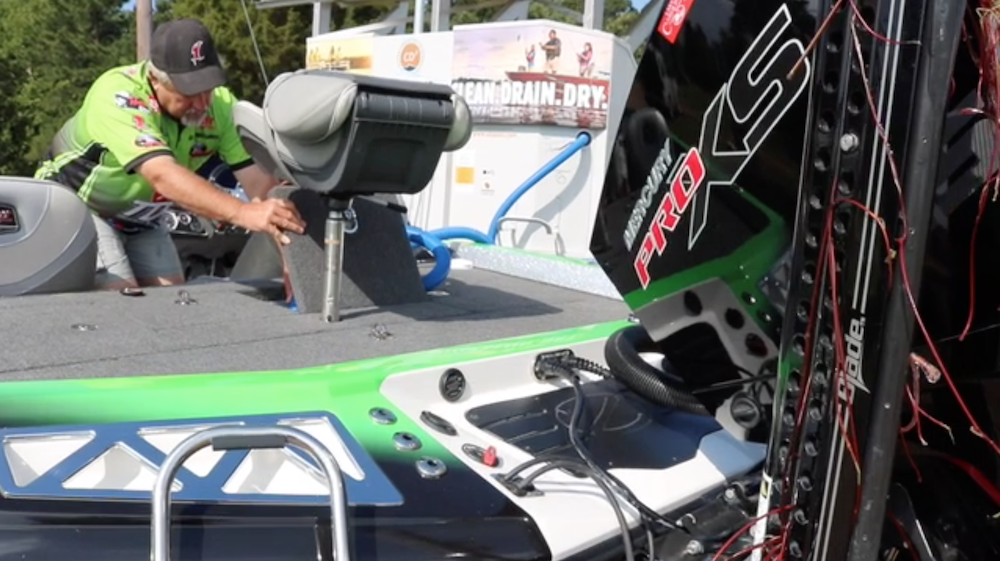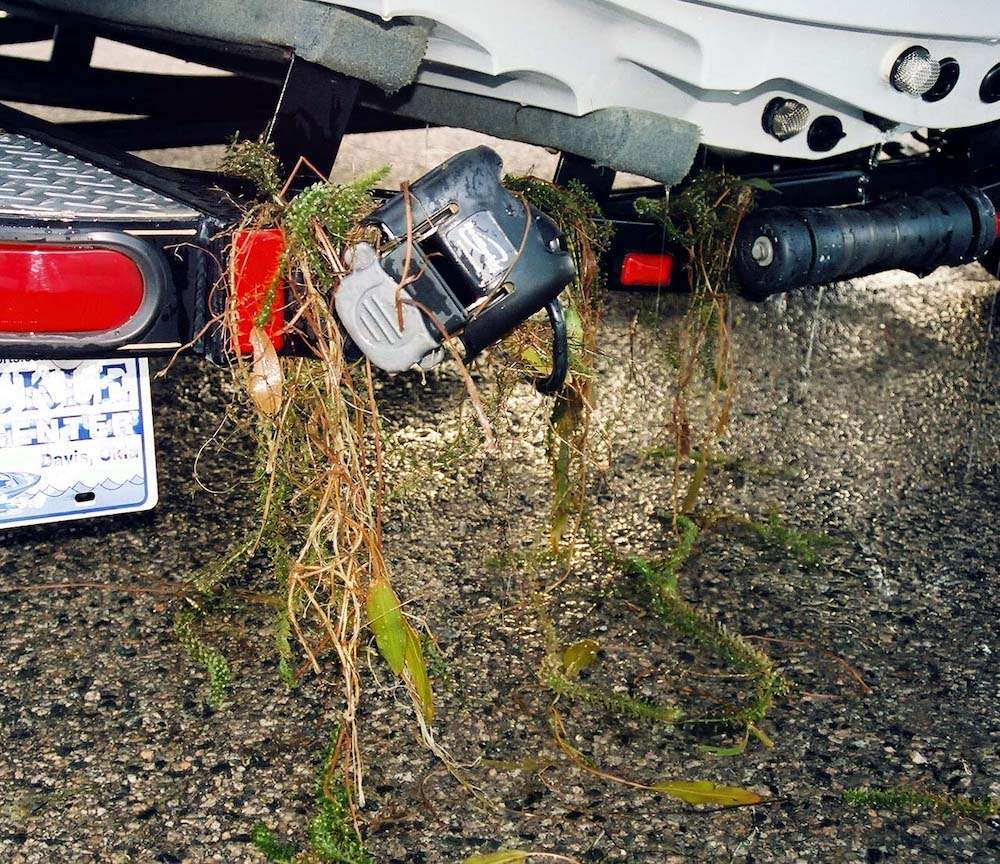
Keeping America’s fishing legacy strong during times of change requires adaptation and innovation. As anglers, Mark Apfelbacher and Ed Rudberg have seen firsthand the changes on Minnesota’s lakes due to the spread of aquatic invasive species (AIS). While they recognized the need to protect waterbodies, they were also concerned that the spread of invasive species could restrict access for anglers and. In response, they founded CD3 (www.cd3systems.com) to develop and manufacture systems that encourage boaters to clean their boats and trailers.
They began in 2016 by partnering with Wildlife Forever, the nonprofit organization that promotes the nationwide mantra of Clean, Drain and Dry to prevent the spread of aquatic invasive species. As a team, they successfully obtained grants to pilot five boater cleaning stations around the state of Minnesota that provided tools to make it easier to remove vegetation and clean boats following recommended protocols. These waterless cleaning stations provided brushes, grabbing tools, a wet/dry vacuum and blower and could be easily positioned near boat launches to encourage use.
The pilot was successful; however, many boat landings do not have access to the power required to run the fully equipped unit, so the company created a solar-powered as well as mobile versions. For locations where space may be an issue, they created scaled-down models with just the basic equipment. Although most installations are in the upper Midwest, they now have over 60 units in 17 states and two Canadian provinces. Units have been installed by private organizations, municipalities, state and federal agencies.
“We wanted to provide free cleaning equipment that spoke to AIS prevention best management practices for all boaters with the goal of public awareness and real actions,” stated Tom O’Brien, New Hampshire Lakes Association President. He continued, “These have been helpful to engage a diversity of groups, including policy leaders, property owners and water recreationists alike.”
“Preconstructed and ready for use, these (solar-powered) units on precast concrete bases were 1/3 or the cost of conventional permanent power washing stations in the area,” stated Alex Wieten, Environmental Resource Manager for Gun Lake Tribe in Michigan. “The goal was to have systems inhibit the transfer of invasive species by empowering physical removal of water and vegetation. Additionally, we had the goal to educate users on the importance of cleaning their boats between lakes that we hope will lead to routine changes by boat launch users.”
Users have acknowledged that signage and markings on the pavement directing boaters to the stations increase awareness and develop behavior patterns. At some sites, multiple units help move boaters away from the launch in heavy use periods, relieve congestion and increase AIS prevention actions. This could be especially helpful at popular tournament launch ramps.
Greg Burgess, Pearl River Valley Water Supply District manager at Ross Barnett Reservoir in Mississippi said, “These systems were deployed to help the public take the actions of Clean, Drain and Dry at a launch to stop the spread of Giant Salvinia. The public is urged to use this free service, and we see it having a positive impact on day-boaters’ prevention actions.”
While these units are not intended to replace hot-water, high pressure decontamination stations, they do place the onus of Clean, Drain and Dry in the hands of boaters. Voluntary prevention programs that utilize self-service systems help keep costs for AIS prevention down and reduce the chances of inspections and cleaning being force on boaters. Bassmaster readers are encouraged to take advantage of these cleaning stations and join the fight against invasive species.






